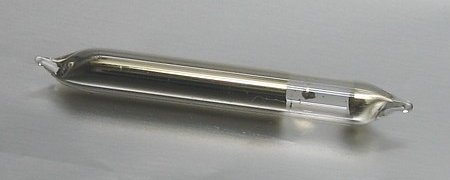


Rubidium and cesium
 Rubidium and cesium are the two most reactive
non-radioactive alkali metals. Both of them react explosively violently with
water. Rubidium is a silvery white metal, cesium has a light gold-like tinge.
Cesium has a low melting point, making it liquid just above room temperature.
These two alkali metals are much less abundant than sodium and potassium. From a
chemical point of view, they resemble sodium and potassium very much. These
metals also exist in the +1 oxidation state only in their compounds.
Rubidium and cesium are the two most reactive
non-radioactive alkali metals. Both of them react explosively violently with
water. Rubidium is a silvery white metal, cesium has a light gold-like tinge.
Cesium has a low melting point, making it liquid just above room temperature.
These two alkali metals are much less abundant than sodium and potassium. From a
chemical point of view, they resemble sodium and potassium very much. These
metals also exist in the +1 oxidation state only in their compounds.
Metallic rubidium and cesium are not accessible for the home chemist. The metals are so reactive, that home chemistry simply is not possible with them, without introducing severe risks.
Compounds of these metals are quite expensive. It is possible, however, to obtain simple salts of rubidium and cesium, such as cesium chloride. These can be obtained at some photography raw chemical suppliers. Although the chemistry of rubidium and cesium resembles the chemistry of potassium very much, there also are some differences. Because of the large radius of the univalent ions, compounds which large anions are stabilized by the large cations. Certain compounds can be crystallized as the cesium- or rubidium salt, while they cannot be crystallized as sodium- or potassium salt.
For the home chemist, however, the use of rubidium salts or cesium salts in aqueous chemistry does not add anything new. The subtle differences between compounds of these two metals and the differences with compounds of sodium and potassium can only be explored in a professional well equipped lab.
Cesium compounds can be of limited interest in pyrotechnical experiments. The metal ion gives rise to emission of beautiful blue light. This is nice in small-scale experiments, but compounds of this metal are too expensive to be of real use in larger scale pyrotechnics.